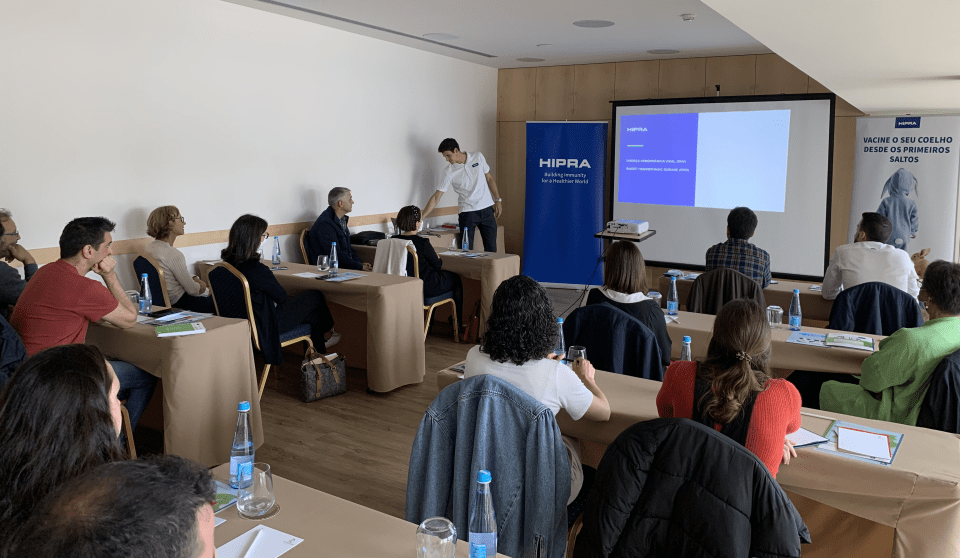AETIOLOGY:
Poxvirus, a DNA virus antigenically related to the Shope fibroma virus. Different pathogenic strains. Susceptible to common disinfectants.
TRANSMISSION:
- Direct: secretions, etc.
- Indirect: insect bites, needles, instruments used for artificial insemination and other fomites.
CLINICAL SIGNS:
- Classical or nodular form: oedemas (eyelids, head – “big head disease” – perianal region, etc.), and nodules or myxoma in distal parts of the body (ears, muzzle, eyelids, etc.) and anogenital region.
- Atypical or respiratory form: breathlessness, coryza, oedema and small myxomas.
LESIONS:
- Classical or nodular form: blepharoconjunctivitis and myxomas.
- Atypical or respiratory form: rhinitis, blepharitis, conjunctivitis, bleeding in the lungs and pneumonia, complicated by secondary bacterial agents (Pasteurella multocida, Bordetella bronchiseptica).
DIAGNOSIS:
- Identification of the causative agent: inoculation in live animals or in cell culture, immunological methods (AGID, IIF) and electron microscopy.
- Serology: CF and ELISA.
TREATMENT, PREVENTION AND CONTROL:
- Biosecurity measures: insect control. Homologous live attenuated vaccines the antigen of which is the myxomatosis virus, and/or heterologous vaccines containing the attenuated Shope fibroma virus.


























